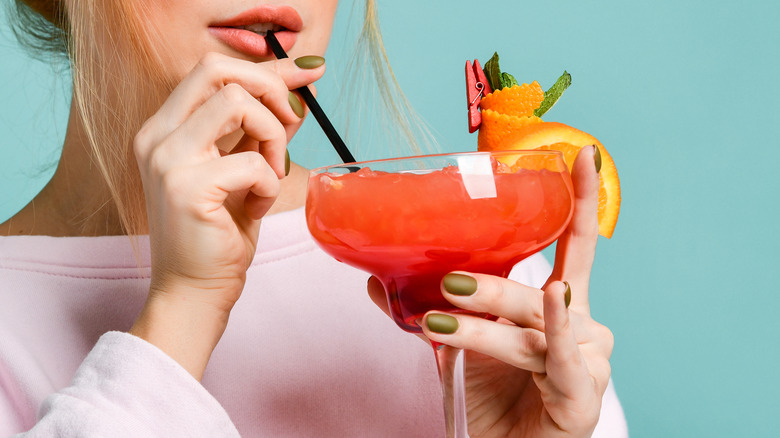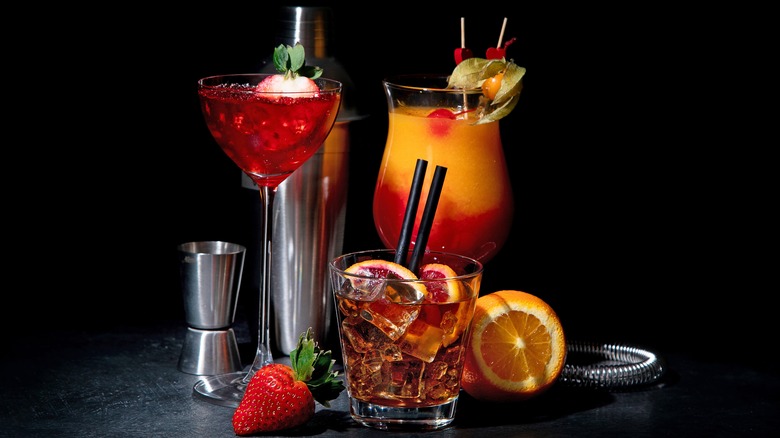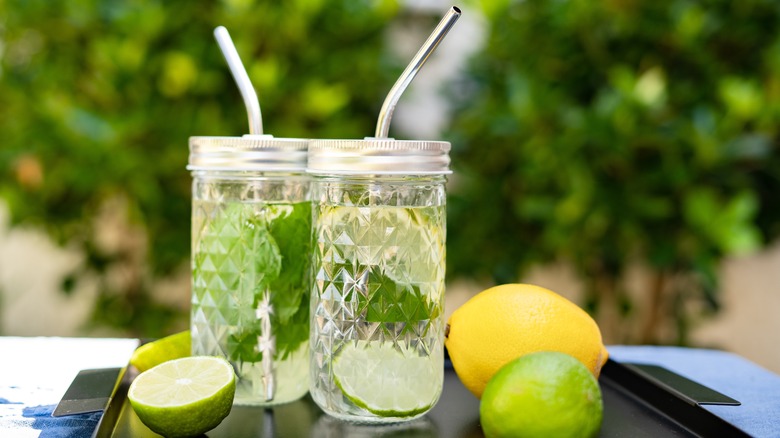To Sip Or To Stir — What Are Those Tiny Cocktail Straws For?
We've all been there — you're sitting at a bar, hand outstretched to receive the drink that you ordered from the bartender, basking in that moment of anticipation ... and then you notice it: a tiny cocktail straw. You thought you'd done the hard part of getting through the day, getting yourself onto this barstool, and deciding on a drink from the many listed on the menu, but now you have to contemplate the continuously confusing question: Is that straw for sipping or stirring? The answer is both, even though this ubiquitous utensil doesn't work especially well for either, given its narrow tube and flimsy body.
Those behind the bar know them by the industry term 'sip stirrers,' which underscores their dual function. To complicate matters further, Southern etiquette dictates that cocktail straws should be used for both purposes in a specific order and only briefly. First, the drink should be stirred, to ensure it's well mixed, then sipped to confirm. Afterward, the straw should be put to the side. At the end of the day, all you need to know is that this tool is there to serve you, and you can use it however you want to improve your cocktail experience.
How straws affect your drinking experience
The diminutive size of cocktail straws may make them seem silly, but there is some serious reasoning to back this up. Given the convenience of drinking with a straw, a person may become drunk more quickly when consuming an alcoholic beverage this way. Using a narrow straw can slow things down for the sake of enjoying the cocktail and avoiding excessive (or, at least, immediate) inebriation.
Just as there are rules for when to shake or stir any cocktail, there are certain drinks that are best suited to be served with a straw. One of the most notable examples is any kind of cocktail that is piled high with crushed ice, such as the mojito or caipirinha. With these, it simply wouldn't be possible to reach the liquid without some help from a tiny tube.
Cocktail straws may actually be more useful on the other side of the bar. Some bartenders use them for the 'straw test,' which is done by quickly dunking a straw into a finished drink, covering one end to keep the liquid suctioned in the middle, and then tasting it. This is done just before serving to check that the flavors are perfectly balanced.
Why and how to avoid those tiny straws all together
Full-sized straws (especially bendable) need to be available for people with motor disorders, who rely on them to safely drink, but cocktail straws are not of much help to anyone. Unfortunately, using those small stirrers as straws can actually be "exhausting" for those who are disabled (via CNN).
Single-use plastics are extremely harmful in the way that they damage our ecosystems and endanger wildlife. In the United States, about 500 million plastic straws are used every day. As a result of this widespread use, straws and stirrers are number seven on the list of the top 10 sources of plastic waste that litter coastal areas where they pose a real hazard to marine life, like seabirds and turtles.
In light of these dangers, several states have implemented plastic straw bans, including California, Oregon, and New York. For those who prefer to enjoy cocktails and other beverages using a straw, there are plenty of alternatives with a lower environmental impact, including stainless steel straws, dishwasher-safe silicone versions, and other options made from reusable materials, like glass. (These have the added bonus of being sturdier stirring implements, too.) It's also possible to find biodegradable versions made from plant-based materials, such as paper and bamboo.



